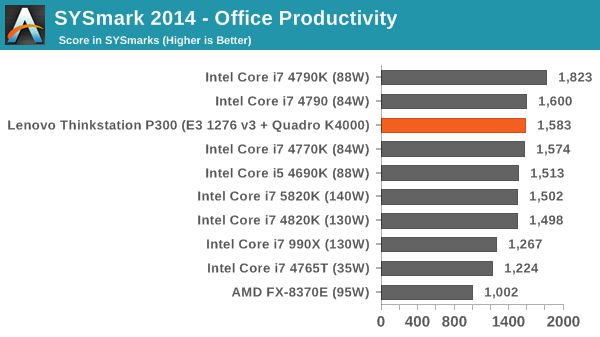Sysmark 2000


Is SysMark 2000 free? Where can I download a trial version.
A good benchmark to start with is SysMark 2000. SysMark 2000 uses real programs and performs tasks that are very likely to be used in real life. For example, PowerPoint 2000 is installed, and the computer creates two new presentations at an amazing speed guided by a script, including animations and other nice gadgets. Twelve of these tests are performed, and the computer gets an index number from SysMark. A Pentium II 450MHz gets an index of 100.
Unfortunately, our pre-production system wouldn’t finish all of the tests, even after a rerunning and re-installing SysMark a couple of times. Nothing to be worried about, however; Sysmark still continues with the other tests, so that we can calculate our own index for both machines.
Uvc web camera driver linux alfa. V4L(2) provides two APIs: one is for programs that want to get and use the data from the capture devices. The other API is internal, for the drivers themselves, so those drivers can then be accessed by programs via V4L(2)'s external API. As I understand it: A standard webcam fits into the category of a. And in linux, encapsulates all video capture devices.
Below are the results: This was a pleasant surprise. When you are comparing a Pentium III 1GHz and a Pentium III Xeon 1GHz with 256KB cache, the difference would be negligible; the average difference between a Foster and a Pentium 4, however, is almost 10%! In Photoshop we even see the Foster sprinting 23% faster than the Pentium 4 at the same clock speed. The only software that didn’t profit from the new possibilities of the Intel Xeon is Excel, but this could also be caused by the same problem that disrupted our CorelDraw, Paradox and Word tests. Pentium 4 Foster Difference Bryce 4 222 237 6,8% CorelDraw 9 416 -Elastic Reality 3.1 211 235 11,4% Excel 2000 209 206 -1,4% NaturallySpeaking Pref 4.0 185 207 11,9% Netscape Communicator 205 245 19,5% Photoshop 5.5 191 235 23,0% Paradox 9.0 159 -PowerPoint 2000 193 205 6,2% Premiere 5.1 135 136 0,7% Word 2000 185 -Windows Media Encoder 4.0 287 302 5,2% Average. 204 223 9,3%. = The tests that wouldn't finish on Foster have also been omitted when calculating the average of Pentium 4 The next test on our list was SiSoft Sandra 2001.
Sandra measures the raw power of a CPU and gives us an indication of the internal and external bandwidth. The CPU benchmark was the first test we ran. We can obviously see here that the Foster does better than a Pentium 4, but it’s still not fast enough to get past a Pentium 4 1.6GHz. The CPU Multimedia benchmark shows the same results: The real surprise for us came when running the memory benchmark.
The i850 Tehama chipset does 1201 and 1216MB/s in the ALU and FPU tests. The new Colusa chipset beats these numbers with ease, and ends at 1394 and 1457MB/s.
The 860 chipset is almost 18% faster than the i850, and that might explain why Photoshop really liked this one.
BAPCo's SYSMark 2000 test is definitely appreciated by Intel because it not only shows off the advantages of RDRAM but it also takes advantage of the Pentium III's SSE instructions in a very favorably manner. While the benchmark is also 3DNow! Optimized there is a noticeable difference in the standings coming from the CC Winstone 2000 benchmark to SYSMark 2000.
Sysmark 2014 Download

In any case, the Athlon still holds its own, while it isn't the highest performing solution here it provides a much greater value than the top performing Pentium III 800 using RDRAM. It is worth noting that the performance difference between running the Athlon 850 on a SuperBypass enabled AMD 750 based motherboard and a KX133 board is negligible, as is the performance difference between the AMD 750 with SuperBypass enabled and disabled (approximately 3%).